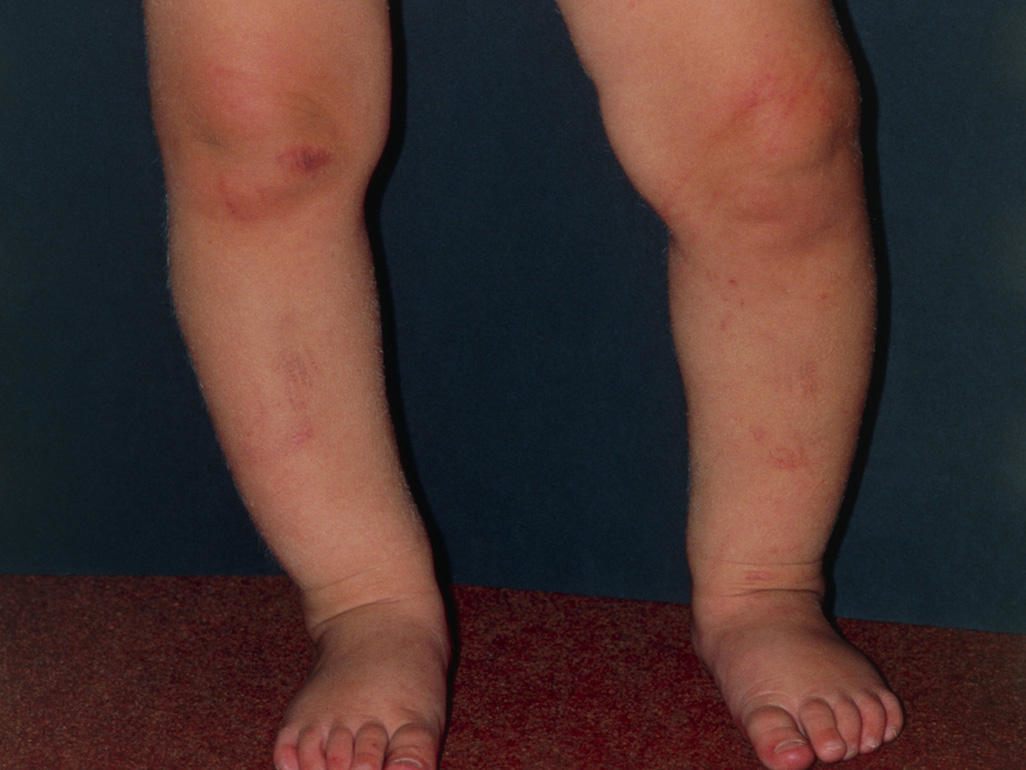Dr Charles Anakwe, an Orthopaedic Surgeon, on Thursday advised pregnant women to eat balanced food and also treat infections early enough during pregnancy to prevent deformity in their infants.
Anakwe, the Managing Director of Camek Orthopaedic Hospital, Gwarinpa District, Abuja, gave the advice in an interview with the News Agency of Nigeria (NAN), in Abuja.
According to the expert, poor nutrition during pregnancy besides genetics could cause deformity such as Bow-legs and K-legs in infants from one to six years old.
Related: IMF Cautions Nigeria on External Reserves Spending due to Unstable Oil Prices
He said that Bow-legs and K-legs were often caused by poor nutrition, especially during pregnancy and could be corrected through good feeding habit and intake of vitamins as prescribed by doctors.
He said that Bow-legs or K-legs could occur in growing children between the ages of one and six years.
“This group is the first stage called primary angular deformity around the knee, while the second group is known as secondary angular deformity.
“These are mainly as a result of dis-united fractures around the knee or advanced Osteoarthritis around the knee in the elderly stage,’’ the expert said.
He said that the primary angular deformity could be physiological by which most toddlers developed Bow-legs right from birth as a result of their foetal position in the womb.
The Orthopaedist, however, added that it could correct itself as the toddler grows.
He further said that the secondary angular deformity would continue to deteriorate and may require medical intervention for correction.
“This group is caused by Rickets, a disorder of infancy and early childhood caused by a deficiency of Vitamin D causing soft bones,” he said.
He explained that Bow-legs and K-legs deformity could be treatable depending on the severity as may be evidenced by X-Ray findings and laboratory profile.
Anakwe also said that the milder deformity could be treated with drugs alone, consisting daily calcium tablets and Vitamin C while moderately severe cases would in addition require Vitamin D supplements.
“In extreme cases, vitamin D3 injection and splitting of the leg may be required.
“If the severity continues to deteriorate as shown by increasing distance between the two knees or ankles in extreme cases, surgery is the only remedy,’’ Anakwe said.
He advised that babies should be allowed to walk in the sun in order to build their own vitamin D.
He attributed another cause of the deformity to genetics, adding that some people usually developed Arthritis as they grow older and may have to go through surgical operation to correct it.
In a separate interview, another Orthopaedist, who spoke on the condition of anonymity, stated that Bow-leg and K-leg were features of poor mineralisation of the bone.
The expert defined poor mineralisation as a situation when a bone that was supposed to be hard becomes soft leading to poor formation of the bone.
According to him, the duo can be as a result of physiological, or as a result of trauma, infection and deficiency of calcium or vitamin B.
“Treatment of the deformity depends on the causes. Rickets is treated with vitamin D; trauma requires surgical operation while infection is treated at the early stage of its detection”.
NAN recalls that the Chief Executive Officer and Corps Marshal of Federal Road Safety Commission (FRSC), Dr Boboye Oyeyemi, automatically disqualified applicants with bow-legs and k-legs during recent nationwide recruitment of new personnel.
He explained the reasons for the commission’s drastic action thus: “In any uniform service, you are not supposed to have tattoo on your body; likewise twisted eyes, bow, K-legs and flat foot are not allowed in the service.
“This is because anybody with bow and K-legs will not be able to stand and walk for a long period of time.
“In uniform service, you must be able to walk and run long distances in case of emergency.”
To save life, you will be required to walk long distances and you won’t be able to perform your duty if you have “K” or flat leg.
“We have patrol duties for eight hours and rescue exercise can take up to five hours and if you are not fit you can’t do it.

